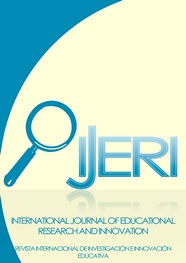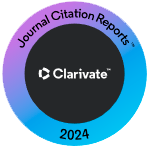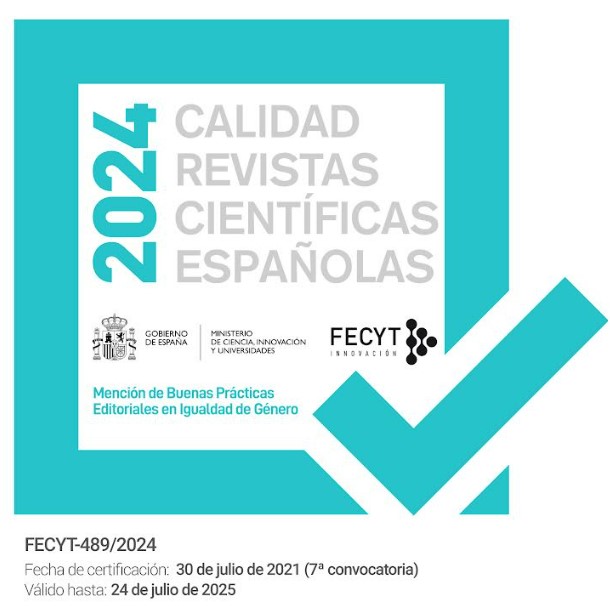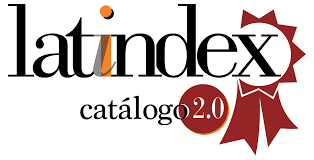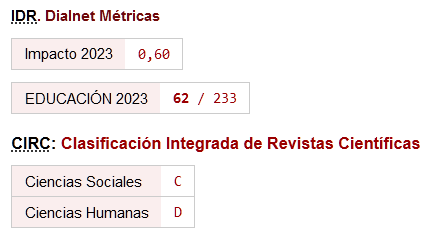Systematic Literature Review: Trends in the education, finance and health sectors in the processes of implementation of Government of Information Technologies
DOI:
https://doi.org/10.46661/ijeri.3342Keywords:
Government of Information Technology, IT Models, IT Standards, IT ServicesAbstract
Current education is marked by a process of technological updating, with augmented reality (AR) being one of the technologies with the greatest projection in the educational field. It is an innovative technique that generates an intermediate reality between the physical environment and the virtual world, through the conversion of everyday objects to digital elements in 3D, allowing its users to interact with them through a mobile device. This technology allows adapting to any situation, such as those moments in which a teacher has to replace another during the school day. The objective of this study is to know the influence exercised in the students of secondary education the application of an innovative experience based on the use of the AR as a dynamic tool of the sessions in which the professor of a subject is absent and has to be replaced by another teacher. To this end, a non-experimental design of a descriptive and correlational type was followed through a quantitative method. An ad hoc questionnaire was applied to a sample of 210 students from an educational center in Ceuta (Spain). The results reflect that the implementation of the experience has contributed to the reach of positive values in motivation and student participation, achievement of objectives, digital competence, classroom climate and all this with few difficulties in the students, being statistically significant differences in regarding the gender and course of the student body.
Downloads
References
Aguilar Alonso, I. (2013). Estructuras, Procesos, Indicadores para Gestionar el Proceso de la Demanda Estratégica en las TI. In tesis doctoral (pp. 50–51). Madrid. recuperado de http://oa.upm.es/22583/1/IGOR_JOVINO_AGUILAR_ALONSO.pdf and http://oa.upm.es/22583/
Almeida, R., Pereira, R., & da Silva, M. M. (2013). IT Governance Mechanisms: A Literature Review. In J. F. eCunha, M. Snene, & H. Novoa (Eds.), Exploring Services Science, Iess 2013 (Vol. 143, pp. 186–199). recuperado desde https://doi.org/10.1007/978-3-642-36356-6_14
Almourad, M. B., Hussain, M., & Al-Obeidat, F. (2017). The best practice in implementing itil service transition for successful it service production. In P. P., R. L., N. M.B., & I. P. (Eds.), 10th IADIS International Conference on Information Systems 2017, IS 2017 (pp. 180–184). Zayed University, P. O. Box 19282, Dubai, United Arab Emirates: IADIS. Recuperado de https://www.scopus.com/inward/record.uri?eid=2-s2.0- 85032335283&partnerID=40&md5=6ced7ba93a42b0c0b3f6b41252ace9cb
Arini, S., Hidayanto, A. N., Nazief, B., Herkules, & Jusuf, M. B. (2017). Benefits, opportunities, costs and risks analysis of information technology infrastructure library implementation. Journal of Engineering and Applied Sciences, 12(8), 2154–2159. Recuperado de http://doi.org/10.3923/jeasci.2017.2154.2159
Babaie, E., Hale, K., Souza, R. De, Adachi, Y., & Ng, F. (2006). Dataquest Dataquest Guide : IT Services Market Research Methodology and Definitions. Recuperado de https://www.gartner.com/doc/485458/dataquest-guide-it-services-market
Beecham, S., Baddoo, N., Hall, T., Robinson, H., & Sharp, H. (2007). Motivation in Software Engineering: A Systematc Literature Review. Engineering, Information and Software Technology, 50(9), 860-878. Recuperado de http://doi.org/10.1016/j.infsof.2007.09.004
De Castro Silva, S. L. F., de Oliveira, S. B., Benac, M. A., Gonçalves, A. A., & Martins, C.
H. F. (2018). IT service management using COBIT Enablers: The case of Brazilian national institute of cancer. (R. A. & G. T., Eds.) International Conference on Information Technology and Systems, ICITS18: Springer Verlag. Recuperado de http://doi.org/10.1007/978-3-319-73450-7_3
Espinoza, Y., & Ramón López, C. (2016). Adoption of Business Process Management
Technologies: a Systematic Literature Review. Ciencias de la Información, 4(3), 45-54
ISO 38500 (2015). Corporate Governance of Information Technology. Recuperado desde: http://www.iso.org.
Kim, C.-N. (2013). An Exploratory Study on the Research Framework of IT Governance and its Elements. Journal of Digital Convergence, 11(4), 25–33.
Kitchenham, B. (2004). Procedures for performing systematic reviews. Keele, UK, Keele University, 33(TR/SE-0401), 28. Recuperado de http://doi.org/10.1.1.122.3308
Kitchenham, B. A., Budgen, D., & Pearl Brereton, O. (2011). Using mapping studies as the basis for further research - A participant-observer case study. Information and Software Technology, 53(6), 638–651. Recuperado de http://doi.org/10.1016/j.infsof.2010.12.011
Kitchenham, B., & Brereton, P. (2013). A systematic review of systematic review process research in software engineering. Information and Software Technology, 55(12), 2049– 2075. Recuperado de http://doi.org/10.1016/j.infsof.2013.07.010
Kitchenham, B., & Charters, S. (2007). Guidelines for performing Systematic Literature reviews in Software Engineering Version 2.3. Engineering, 45(4ve), 1051. Recuperado de http://doi.org/10.1145/1134285.1134500
Know, W. E. (2006). In Search of What We Experimentally Know about Unit Testing. IEEE Computer Society, 23(6), 72-80. Recuperado de https://www.computer.org/csdl/mags/so/2006/06/s6072.html
Marcela, G., José A, C., & Mario, P. (2014). Métodos de Investigación en Ingeniería de Software. Madrid: RA-MA.
Gutiérrez, C., & Garbajosa, J. (2012). Smart Products : Una Revisión Sistemática de la Literatura (Tesis de maestría) Universidad Politécnica de Madrid. Madrid.
Mendeley. (2018). Recuperado de http://www.mendeley.com/
Morales, J. V. (2015). Modelos de Gobierno TI para Instituciones de Educación Superior,Revista Politécnica 36(3), 57-62 Recuperado de http://www.revistapolitecnica.epn.edu.ec/ojs2/index.php/revista_politecnica2/article/view/ 529
Müller, S. D., & de Lichtenberg, C. G. (2018). The culture of ITIL: Values and implementation challenges. Information Systems Management, 35(1), 49–61. Recuperado de http://doi.org/10.1080/10580530.2017.1416946
Noraini, C. P., Bokolo, A. J., Rozi, N. H., & Masrah, A. A. (2015). Risk Assessment of It Governance : a Systematic Literature Review. Journal of Theoretical and Applied Information Technology, 71(2), 184–193. Recuperado de http://www.jatit.org/volumes/Vol71No2/4Vol71No2.pdf
Ross, J. W. (2016). IT Governance on One Page. Center for Information Systems Research. SSRN Electronic Journal 349. Recuperado de: http://doi.org/10.2139/ssrn.664612
Ruiz de Aguirre, L., & Retolaza, J. L. (2012). Participación de los stakeholders en la gobernanza corporativa: fundamentación ontológica y propuesta metodológica. Universitas Psychologica, 11(2), 619-628.
Downloads
Published
How to Cite
Issue
Section
License
Copyright (c) 2019 IJERI: International Journal of Educational Research and Innovation

This work is licensed under a Creative Commons Attribution-NonCommercial-NoDerivatives 4.0 International License.

